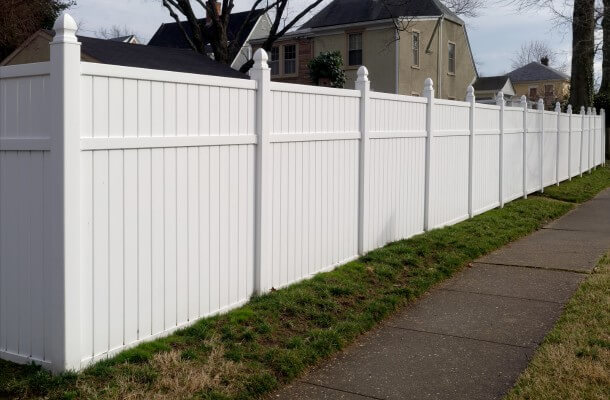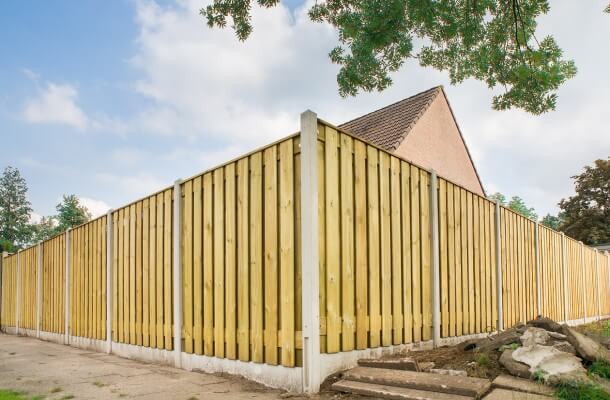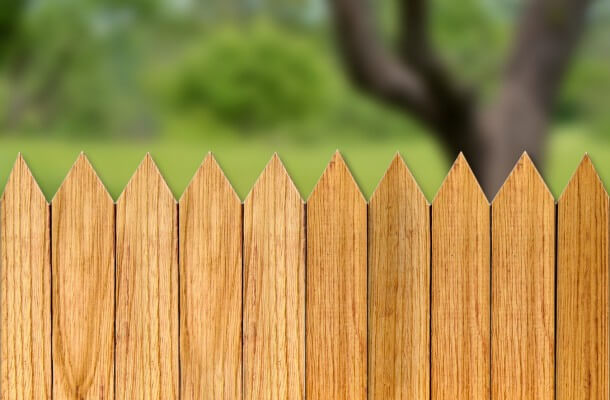Fencing is an important part of any home. It provides privacy, security, and aesthetic appeal to your property. When it comes to choosing fencing materials, two of the most popular options are vinyl and wood.
But which is better for your home – vinyl or wood fencing? Here’s a comparison of the pros and cons of each to help you decide.
Key Factors to Consider
When choosing between vinyl and wood fencing, here are some of the key factors to take into account:
Cost
- Vinyl fencing is typically more expensive upfront but requires less maintenance over time. Wood fencing is cheaper upfront, but requires regular staining, sealing, and repair.
Durability
- Vinyl is more resistant to rotting, cracking, and insect damage. But it can become brittle and fade over time. Wood is prone to rot and insect damage, but can be easily repaired.
Appearance
- Vinyl looks uniform and clean. Wood has more natural character. Both come in a variety of colors and designs.
Maintenance
- Vinyl requires occasional washing. Wood needs frequent staining, sealing, and repairing.
Customization
- Wood can be more easily customized with intricate designs. Vinyl has more limited options.
Environmental Impact
- Wood is a renewable, biodegradable resource. Vinyl is plastic and not environmentally friendly.
The Benefits of Vinyl Fencing
Vinyl has grown in popularity in recent years as a fencing material. Here are some of its advantages:
Durability
- Vinyl holds up well against weather, rotting, cracking, and insect damage. It won’t warp or splinter like wood can.
Low Maintenance
- Other than occasional washing, vinyl fencing requires very little ongoing maintenance compared to wood. No painting, staining, or sealing is required.
Customizable Looks
- Vinyl fencing can mimic wood with the look of planks or pickets. It comes in many color options beyond white, including tans, browns, and greys.
Cost Savings Over Time
- While vinyl is pricier upfront, the long-term cost savings from lack of maintenance makes it cheaper in the long run.
Safe for Kids and Pets
- With no risk of splinters or toxins, vinyl is safer for households with kids and pets.
Long Lifespan
- Vinyl can last over 20 years with proper installation. It resists wear and tear well.
Increased Home Value
- Curb appeal matters, and vinyl looks clean and upscale. This can boost your home’s value compared to unfinished wood.
The Benefits of Wood Fencing
Despite the rise of vinyl, wood fencing remains a popular choice due to these advantages:
Natural Beauty
- The look and feel of real wood is hard to match. It offers character and visual interest.
Ease of Repair
- Damaged wood boards can be quickly and easily replaced. Vinyl is not as simple to repair.
Greater Customization
- Wood allows for more design options like lattice, mixed horizontal/vertical patterns, and decorative tops.
Environmentally Friendly
- Wood is biodegradable and renewable. Much better for the planet than plastic vinyl.
Lower Upfront Cost
- For tight budgets, wood is more affordable for initial installation costs. Ongoing maintenance is required though.
Ease of Installation
- Working with wood doesn’t require special tools. Vinyl’s rigid planks can be trickier to install.
Adds Value
- Like vinyl, wood fencing can boost property value by improving curb appeal.
Range of Types
- From picket to privacy to lattice and beyond, wood offers the widest range of design possibilities.
Key Considerations for Your Choice
When weighing vinyl vs wood fencing for your home, keep these key considerations in mind:
Climate Conditions
- In wet, humid, coastal, or hot climates, wood requires extra maintenance to withstand rotting and warping. Vinyl holds up better.
Budget
- Upfront cost favors wood. But for long term cost, vinyl wins out by avoiding frequent maintenance expenses.
Desired Aesthetic
- If you want a more natural, charming look, wood is your best bet. For a clean, uniform appearance, vinyl works well.
Yard Size
- The bigger your fenced-in area, the more cost-effective lower maintenance vinyl becomes over wood.
HOA Restrictions
- Many HOAs allow both options. However some old neighborhoods only permit classic wood fencing for aesthetic continuity.
Amount of Customization
- Wood accommodates more intricate designs and patterns. Vinyl works better for simple, standard privacy and picket fencing.
Eco-Friendliness
- Wood is the greener choice. Vinyl is plastic-based, so it has larger carbon footprint.
The Verdict: Vinyl vs Wood Fencing
When comparing vinyl vs wood for home fencing, there are great reasons to consider either option. Here are some final guidelines for choosing between them:
- For low maintenance and longevity, vinyl is the better choice. It will last longer with less upkeep.
- For natural beauty and custom looks, wood is superior. It provides character, charm, and customization abilities.
- For budget-conscious homeowners, wood is more affordable upfront. But factor in long-term maintenance costs.
- For eco-friendly options, wood is the winner. It’s renewable and biodegradable.
- For simple, clean, standard designs, vinyl works well. Wood is better for unique patterns and accents.
- Consider your climate carefully. In wet, humid, coastal regions vinyl holds up better than wood.
- Ensure any HOA restrictions are met if choosing wood or vinyl fencing replacement.
Take your specific needs and preferences into account when deciding between wood and vinyl fencing. And consult with qualified fencing contractors to determine the best option for enhancing and protecting your home.



